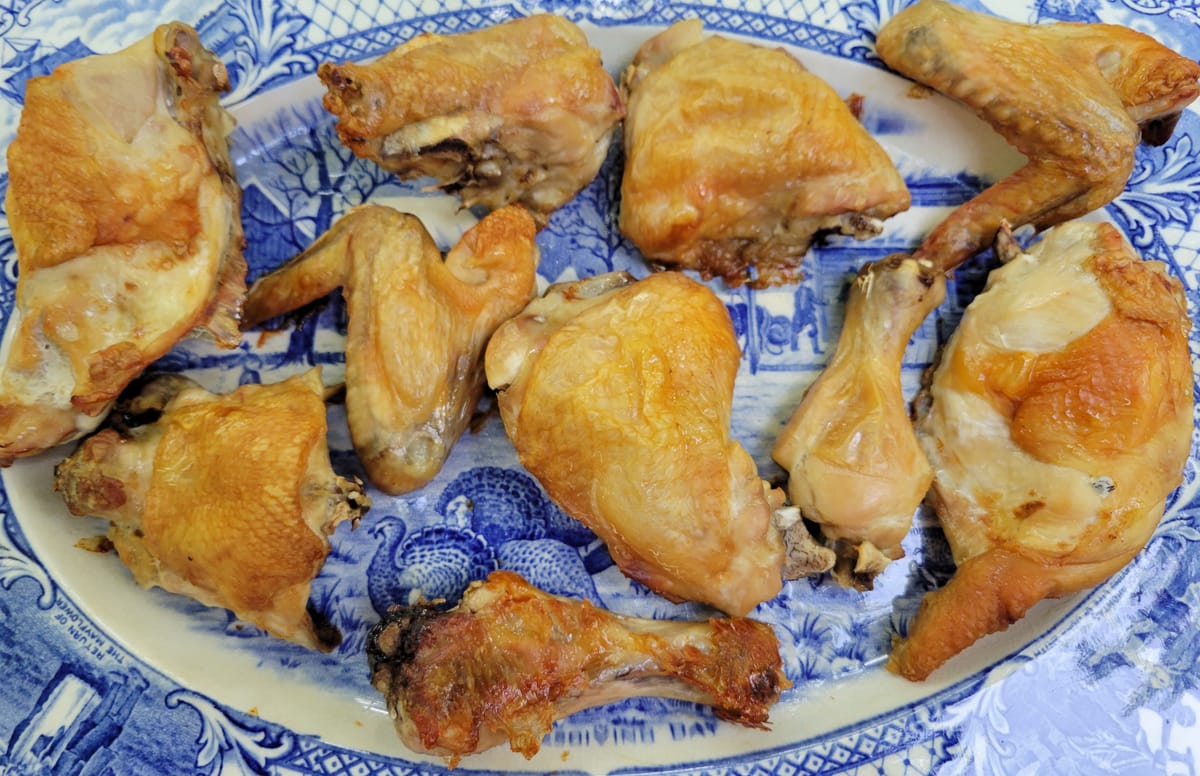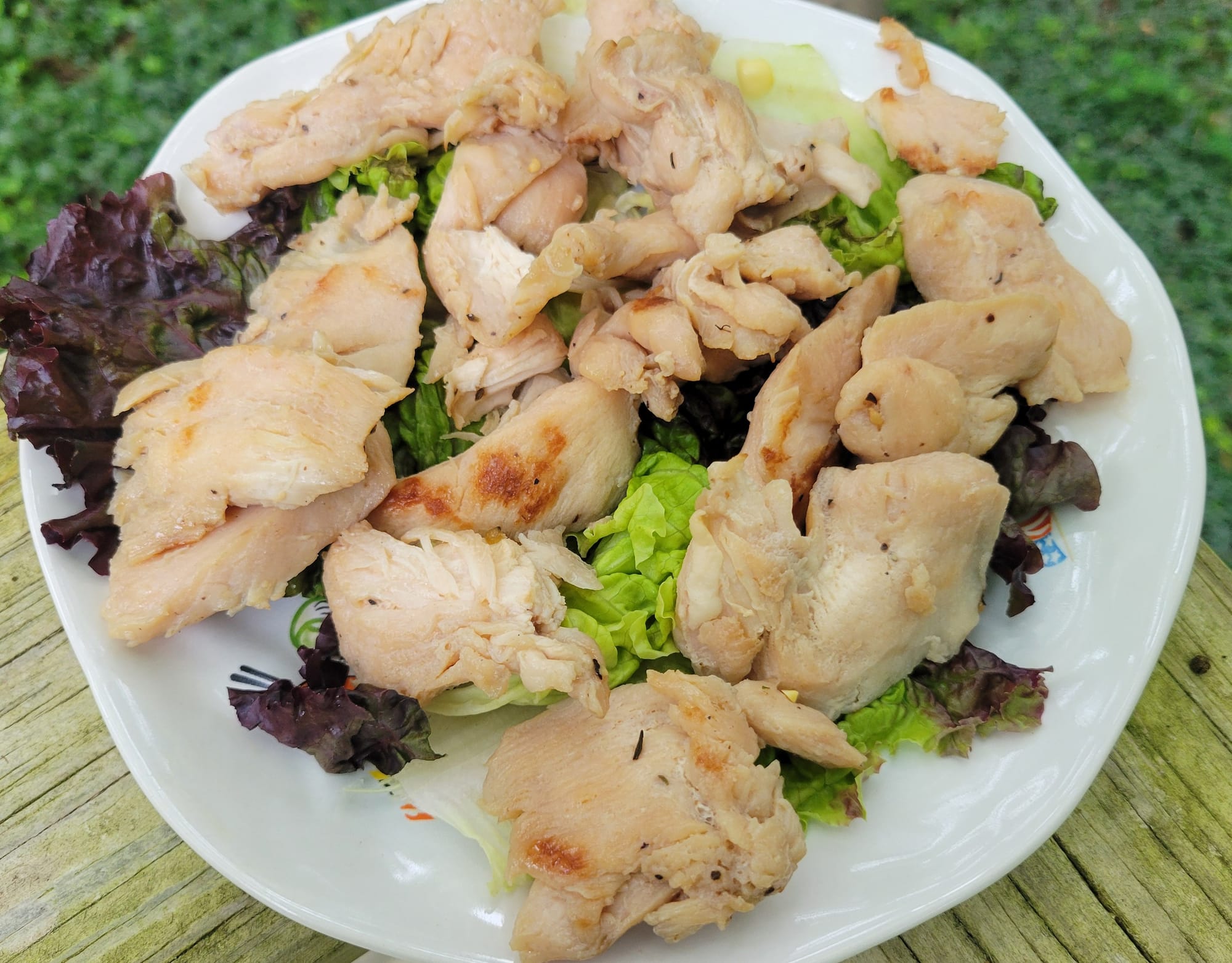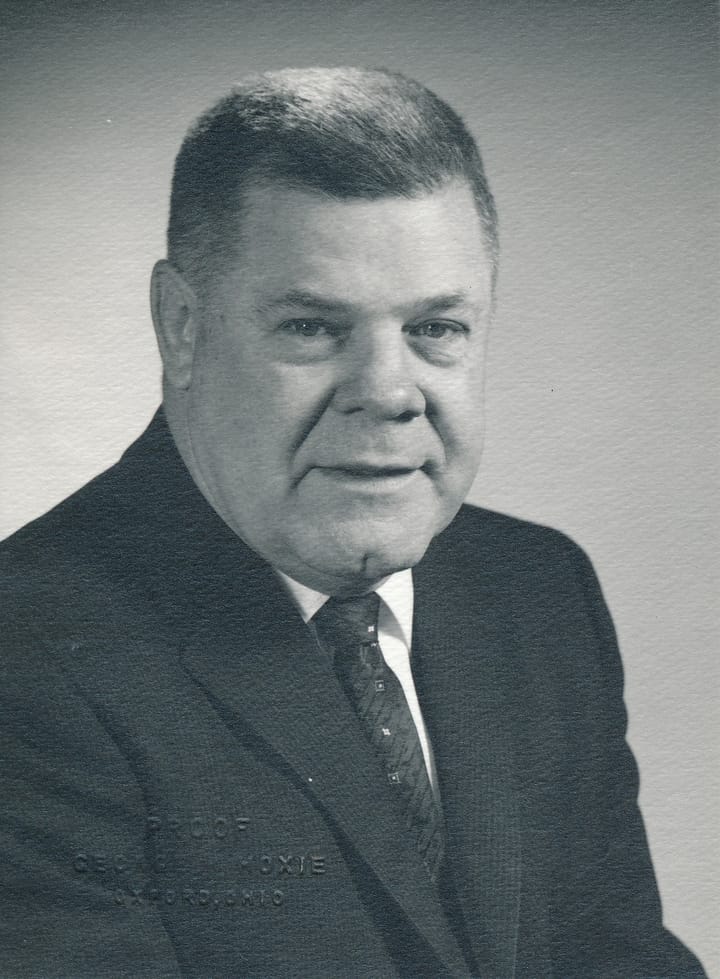On My Plate: Chicken
I rarely bother to read chicken recipes, let alone follow them. However, I recently followed a chicken breast recipe, with excellent results.

Boneless breast is the form of chicken most often consumed in this household, typically sourced locally from Jennifer Bayne’s 7 Wonders Farm. A boneless breast is the easiest and most flexible part of the chicken for a quick simple dinner.
Gourmet chefs and newspaper recipes prefer thighs, because they are juicier and more full-flavored, especially when paired with complicated sauces. Our local breasts can be a bit dry and chewy, a function of the free-range lifestyle and superior feed enjoyed by our locally raised chickens.
I rarely bother to read chicken recipes, let alone follow them. Simplicity is the point of preparing chicken breasts. However, I recently followed a chicken breast recipe, with excellent results. The newspaper headline ensnared me: “This simple trick will give you silky, juicy chicken breasts.”
The simple trick is a distinctive formula for marinating the raw chicken. I have been using yogurt or olive oil, with mediocre results. Here’s the winning recipe:
- Cut 1 pound of chicken breast into small pieces.
- Marinade the pieces in a mix of 1½ teaspoons cornstarch, 1/2 teaspoon baking soda, 1/4 teaspoon sugar, 1/4 teaspoon salt, 1 teaspoon soy sauce, 1/4 teaspoon pepper, 1 tablespoon oil, and 1 tablespoon egg white; refrigerate between 30 minutes and 2 hours.
- Plunge the chicken pieces in 4 cups of boiling water for 90 seconds.
- Remove the chicken pieces from the boiling water and use in a recipe.
The technique of including egg white in the marinade is called velveting, and folks have told me, of course, you haven’t heard of this? Nope, I hadn’t. “Many” Chinese restaurant chefs apparently do “velvet” their chicken.

The newspaper recipe suggested using the chicken pieces in a stir-fry with an elaborate sauce. I followed the recipe and it turned out fine. But the result was too high-calorie for our household. So I repeated the four-step velveting process listed above, but this time I threw the chicken on a sheet of aluminum foil and threw it on the grill.
A local breast without marinade comes off the grill a bit tough and stringy, especially if cooked to 180 degrees, as is recommended for chicken. A grilled breast marinaded in oil or yogurt is sort-of tender. The chicken pieces prepared as described above were extremely soft and tender, even when grilled at a high temperature.
I love crispy chicken wings, but not the mess and calories of frying them in oil. Here is an awesome oven-baked no-oil recipe that has worked for me many times: Simply place the wings on parchment paper, cook at 250 for 30 minutes, increase the temperature to 425 and bake for another 45 minutes. That’s all there is to it.
Cook’s Illustrated magazine says that the wings should be coated first in baking powder (not baking soda!) in order to make them crispier. However, even 1 tablespoon of baking powder contains more sodium than this household should ingest. I experimented by coating half of the wings with baking powder and half without and we couldn’t tell the difference. So if you are watching your sodium intact, omit the baking powder.
If cooked in advance, the wings will wrinkle and soften as they cool. To re-crisp them, place the wings on a tray and bake them at 400 for around 5 minutes. Be sure not to burn them.
So there you have it – keep it simple when handling our local chicken.
James Rubenstein is president of the Board of Directors for the Oxford Free Press and professor emeritus of geography at Miami University.




